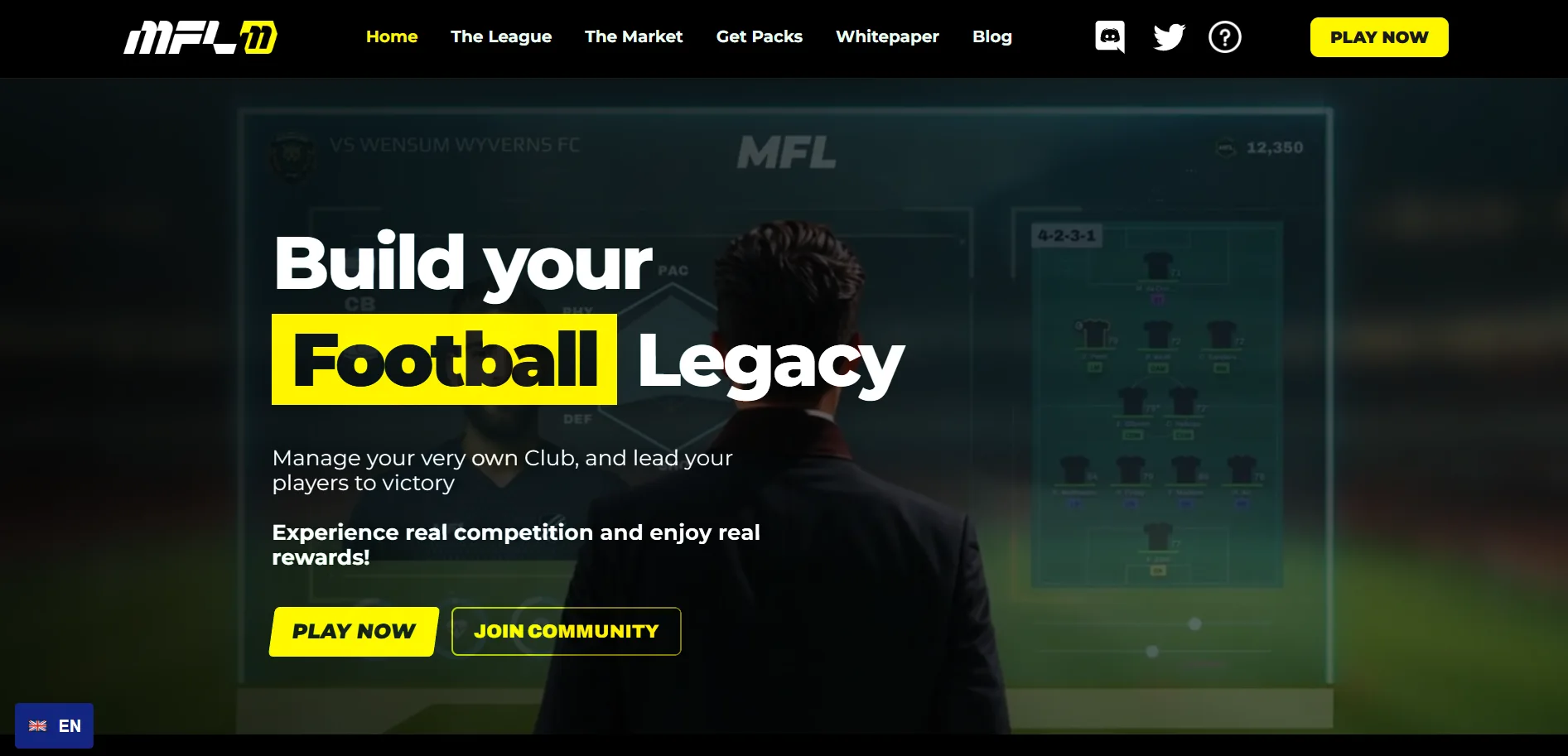Metaverse Football League (MFL) is a next-generation Web3 football manager built on the Flow blockchain. The project combines strategic gameplay, collectible NFT assets, and a full economic model powered by the $MFL token. Players can manage clubs, act as football agents, build lineups, and participate in matches and tournaments. MFL aims to create not just a game but an entire metaverse where digital sports are integrated with ownership and social interaction.
- Gameplay Concept and User Roles
- Economy and $MFL Token
- NFT Assets: Players and Clubs
- Progression Mechanics and Tactics
- Community, Growth, and Prospects

Gameplay Concept and User Roles
At the core of MFL is the idea of building a football ecosystem where every user can choose between three main roles: club owner, player agent, or a combined hybrid model. This flexibility allows for tailored engagement strategies — from managing tactics and lineups to earning passive income through player rentals.
User Roles in MFL:
-
Club Owner — manages squads, participates in leagues and tournaments.
-
Agent — buys NFT players and leases them to clubs for dividends.
-
Hybrid — combines club ownership with player development and earnings from matches.
The league system is structured as a pyramid: teams move between divisions based on performance and can also participate in various cup tournaments. The onboarding process is flexible — users can purchase a club or a starter player pack, making the project accessible even to beginners. This approach enables players to grow at their own pace and choose their preferred role in the ecosystem.
Economy and $MFL Token
MFL uses its native token — $MFL — which is non-withdrawable and serves solely for in-game activity. It is essential for managing assets, paying for training, leasing players, and entering competitions. Players earn $MFL through victories and achievements, while agents profit from player contracts and development.
The table below outlines the core components of the in-game economy:
| Element | Description |
|---|---|
| $MFL | In-game currency, exchange rate 800 MFL = 1 USD (within the platform) |
| Agent Income | Earnings from renting and developing players |
| Club Income | Prizes for wins, rankings, and participation bonuses |
| NFT Trading | Buying/selling players and clubs on Flow marketplaces and within MFL |
| Progress & Rarity | Leveling up boosts token and player value |
Thoughtful tokenomics, limited issuance, and rarity management create a sustainable game economy. The value of assets depends not only on rarity but also on on-field performance, which encourages player development and active participation.
NFT Assets: Players and Clubs
Each asset in MFL is represented as an NFT on the Flow blockchain. Unique footballers have various attributes: dribbling, passing, defense, physicality, and more. The overall rating (OVR) is calculated based on the player's position, making each player a strategic asset.
Clubs are also NFTs — they can be bought, sold, and upgraded. Players include hidden stats (like potential and longevity) that aren’t visible to users but affect growth rates. This helps avoid early speculation and makes player development unpredictable.
Assets can be traded on internal marketplaces or external platforms like Flowty. Players can be leased, placed in development centers, or used in matches. This system allows for flexible asset management, balancing between short-term income and long-term value growth.
Progression Mechanics and Tactics
Players in MFL grow through match participation and training. The XP system compares player strength with team level — the closer the match, the better the growth. If a player is much stronger than the squad, progression slows, ensuring balance across teams.
The game features over 25 tactical formations, customizable instructions, and the ability to adapt strategies based on team composition. Players can perform in secondary roles, adding tactical depth. Although there are currently no substitutions or injuries, cards and suspensions are implemented, with plans for live matches, sponsorships, and morale systems in future updates.
The “Development Center” is a separate mechanic that allows agents to train players without participating in matches. This is especially useful for agents without clubs. Overall, this layered system offers a mix of active and passive growth strategies for users.
Community, Growth, and Prospects
The MFL community is rapidly expanding. Over 2,700 active clubs compete in leagues, with trading volume exceeding $1.1M in Q1 2025. A strong fanbase is forming around the game, with active Discord servers, bloggers, podcasts, and Twitter accounts sharing strategies, match breakdowns, and NFT analytics.
Major content creators like Nepenthez and WorkTheSpace have helped grow awareness through reviews and live matches. The project also ventures offline: in July 2025, the first fan meetup took place at Parc des Princes stadium in Paris.
Future plans include club infrastructure, continental tournaments, a full-fledged marketplace, extended tokenomics, and DAO governance features. Despite the technical barrier and Web3 complexity, MFL continues to attract both gamers and crypto investors thanks to its consistent development and strategic vision.




